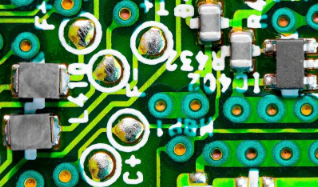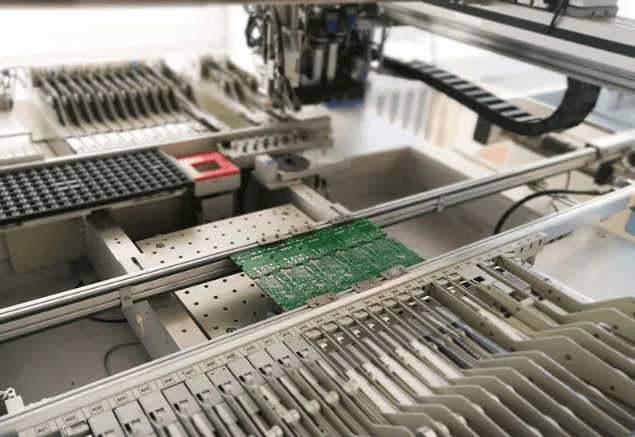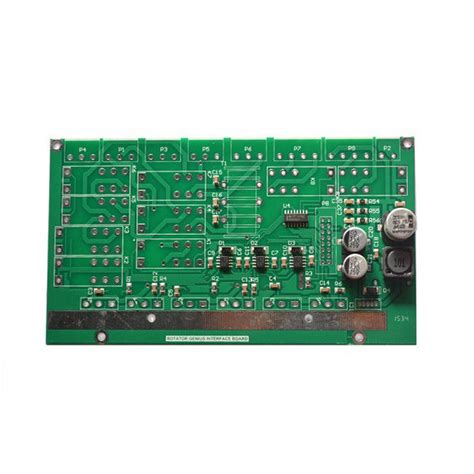The Comprehensive Guide to HASL PCB: Process, Advantages, and Applications
Introduction to HASL PCB
Hot Air Solder Leveling (HASL) remains one of the most widely used surface finishing techniques in printed circuit board (PCB) manufacturing. For decades, this reliable method has served as the industry standard for protecting copper traces from oxidation while providing excellent solderability. HASL PCBs continue to dominate many segments of electronics manufacturing due to their cost-effectiveness, durability, and proven performance in various applications.
This comprehensive article explores the HASL PCB process, its technical specifications, advantages over alternative finishes, limitations, and typical applications. We’ll examine both traditional leaded HASL and the more environmentally friendly lead-free HASL variants, providing electronics engineers and PCB designers with the information needed to make informed decisions about surface finishes for their projects.
The HASL PCB Manufacturing Process
Step 1: PCB Fabrication
The HASL process begins with a fully fabricated PCB that has exposed copper pads and traces. The board has already undergone all the necessary etching, drilling, and multilayer lamination processes typical in PCB manufacturing.
Step 2: Cleaning and Preparation
Before applying solder, the PCB undergoes thorough cleaning to remove any oxides, contaminants, or residues from the copper surfaces. This typically involves:
- Chemical cleaning with acidic solutions
- Micro-etching to create an optimal surface texture
- Rinsing with deionized water
- Drying to prevent moisture entrapment
Step 3: Flux Application
A liquid flux is applied to the entire board surface to:
- Prevent oxidation during the soldering process
- Improve solder wettability
- Ensure uniform solder adhesion
The flux type (rosin-based, water-soluble, or no-clean) is selected based on the application requirements and subsequent assembly processes.
Step 4: Solder Application
The prepared PCB is immersed in a molten solder bath:
- For leaded HASL: 63/37 tin-lead alloy (melting point ~183°C/361°F)
- For lead-free HASL: Typically tin-copper or tin-silver-copper alloys (melting points 217-227°C/423-441°F)
Immersion time is carefully controlled (typically 3-5 seconds) to ensure proper solder coverage without excessive copper dissolution.
Step 5: Air Knife Leveling
Immediately after removal from the solder bath, the board passes between high-pressure hot air knives (typically 275-300°C/527-572°F) that:
- Remove excess solder from the surface
- Level the solder on pads and holes
- Ensure uniform thickness
- Prevent solder bridging between closely spaced pads
Step 6: Cooling and Inspection
The PCB is cooled gradually to prevent thermal shock, then undergoes rigorous inspection:
- Visual examination for uniformity and defects
- Thickness measurements
- Solderability testing
- Electrical testing if required
Technical Specifications of HASL PCBs
Solder Thickness
HASL typically produces solder thicknesses ranging from:
- Minimum: 1-2 μm (0.04-0.08 mils)
- Typical: 2-25 μm (0.08-1.0 mils)
- Maximum: Up to 40 μm (1.6 mils) in some cases
The non-uniform nature of HASL means thickness can vary across the board and even across individual pads.
Surface Flatness
HASL provides moderate surface flatness compared to other finishes:
- Suitable for components with pitch ≥ 0.65mm
- May present challenges for very fine-pitch components (<0.5mm)
- Not recommended for chip-scale packages (CSP) or ball grid arrays (BGA) with very small balls
Shelf Life
Properly stored HASL PCBs maintain good solderability for:
- Leaded HASL: 12-18 months
- Lead-free HASL: 6-12 months
Storage in low-humidity, temperature-controlled environments extends shelf life.
Advantages of HASL PCB Surface Finish
1. Cost-Effectiveness
HASL remains one of the most economical PCB surface finishes:
- Lower material costs than many alternatives
- Simple process requiring minimal specialized equipment
- High throughput suitable for mass production
- Reduced processing time compared to some alternatives
2. Excellent Solderability
The tin-rich surface provides:
- Immediate wettability for soldering
- No additional fluxes required in many cases
- Compatibility with most solder alloys
- Reliable solder joints in wave and hand soldering
3. Durability and Protection
HASL offers robust protection:
- Thick solder layer resists handling damage
- Effective barrier against copper oxidation
- Withstands multiple thermal cycles during assembly
- Good mechanical strength for through-hole components
4. Proven Reliability
Decades of industry use have demonstrated:
- Consistent performance in various environments
- Well-understood failure modes
- Extensive process knowledge throughout the industry
- Compatibility with most cleaning processes
5. Repairability
HASL surfaces allow for:
- Easy rework and repair of solder joints
- Multiple reflow cycles if needed
- Simple touch-up procedures

Limitations of HASL PCB Finish
1. Surface Planarity Issues
The HASL process creates:
- Uneven surfaces problematic for fine-pitch components
- Potential coplanarity issues with BGA packages
- Challenges for direct chip attachment methods
2. Thermal Stress
The high-temperature process may:
- Cause warpage in thin or large PCBs
- Lead to delamination in low-quality materials
- Create stress on plated through holes
3. Environmental Concerns (Leaded HASL)
Traditional HASL using lead raises:
- RoHS compliance issues
- Waste disposal challenges
- Workplace safety considerations
4. Process Control Challenges
Maintaining consistency requires careful attention to:
- Solder bath composition over time
- Temperature control throughout the process
- Air knife pressure and temperature
- Board orientation during leveling
Lead-Free HASL: Meeting Environmental Regulations
With the adoption of RoHS directives globally, lead-free HASL has become increasingly important. The most common lead-free HASL alloys include:
1. SAC Alloys (Tin-Silver-Copper)
- Typical composition: Sn96.5Ag3.0Cu0.5
- Melting point: ~217-220°C (423-428°F)
- Advantages: Excellent reliability, widely adopted
- Disadvantages: Higher cost than tin-lead, slightly higher melting point
2. Tin-Copper Alloys
- Typical composition: Sn99.3Cu0.7
- Melting point: ~227°C (441°F)
- Advantages: Lower cost than SAC, simpler composition
- Disadvantages: Higher melting point, less thermal fatigue resistance
3. Other Variants
Various proprietary alloys with additions of:
- Nickel for improved durability
- Bismuth for lower melting points
- Antimony for enhanced mechanical properties
Lead-free HASL requires process adjustments including:
- Higher operating temperatures
- Modified flux formulations
- Potentially longer exposure times
- More aggressive air knife settings

Applications of HASL PCBs
1. Consumer Electronics
- Televisions and audio equipment
- Home appliances
- Power supplies
- LED lighting systems
2. Industrial Equipment
- Control systems
- Power distribution
- Motor controllers
- Industrial automation
3. Automotive Electronics
- Non-safety-critical systems
- Lighting controls
- Power distribution modules
- Aftermarket electronics
4. Telecommunications
- Base station components
- Power amplifiers
- Backplane connections
- Network infrastructure
5. Aerospace and Defense (Where Permitted)
- Avionics systems
- Ground support equipment
- Military communications gear
Comparing HASL to Alternative PCB Finishes
HASL vs. ENIG (Electroless Nickel Immersion Gold)
- ENIG offers better flatness for fine-pitch components
- ENIG has longer shelf life
- HASL provides thicker, more durable coating
- HASL is significantly less expensive
HASL vs. OSP (Organic Solderability Preservative)
- OSP provides excellent planarity
- OSP is cheaper than HASL
- HASL offers better durability during handling
- HASL allows for multiple reflow cycles
HASL vs. Immersion Silver
- Immersion silver provides better flatness
- Silver offers excellent high-frequency performance
- HASL has better shelf life than silver
- HASL is less sensitive to tarnishing
HASL vs. Electroplated Gold
- Gold provides the best contact properties
- Gold is superior for wire bonding
- HASL is far more economical
- Gold requires nickel underlayer adding complexity

Future Outlook for HASL Technology
While newer surface finishes continue to emerge, HASL maintains significant market share due to:
1. Ongoing Process Improvements
- Better control systems for more uniform coatings
- Advanced flux formulations
- Improved lead-free alloy development
2. Cost Pressures in Electronics
- Continued need for economical solutions
- Large installed base of HASL-capable facilities
- Familiarity across the supply chain
3. Specific Application Needs
- High-reliability requirements in some sectors
- Through-hole component assembly
- High-power applications benefiting from thick coatings
However, the trend toward miniaturization and high-density interconnects continues to drive adoption of flatter surface finishes for many advanced applications.
Conclusion
HASL PCB technology remains a vital part of the electronics manufacturing ecosystem, offering an optimal balance of performance, reliability, and cost for countless applications. While alternative finishes have emerged to address specific limitations, particularly for fine-pitch components and advanced packaging, HASL continues to be the right choice for many conventional PCB applications.
Understanding the HASL process, its advantages, and its limitations allows designers and engineers to make informed decisions about when to specify this proven surface finish. As lead-free HASL formulations continue to improve and process controls become more sophisticated, this traditional finishing method will likely maintain its position as a workhorse of PCB manufacturing for years to come.
For many applications—particularly those using through-hole components, requiring robust solder joints, or operating under cost constraints—HASL represents the most practical and reliable surface finish solution available today.





